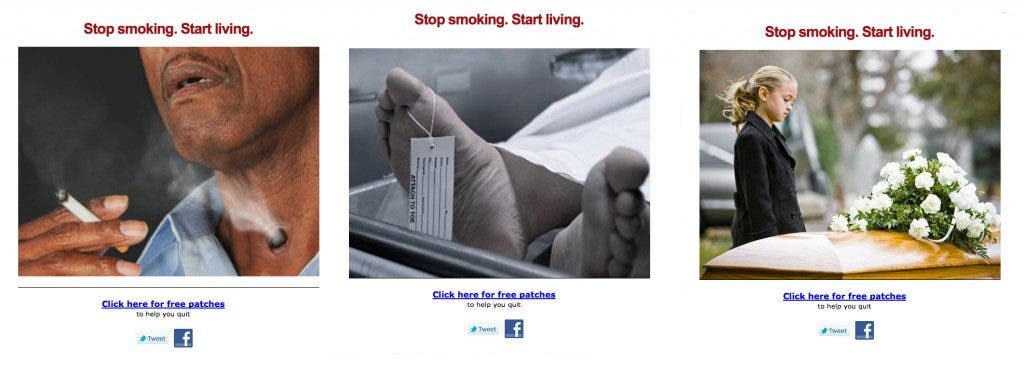Using functional magnetic resonance imaging, scientists from the universities of Michigan and Pennsylvania scanned the brains of 50 smokers while they viewed anti-smoking ads. They recorded their neural activity spikes as they watched the sample of 40 images one at a time, looking for increase activity in the medial prefrontal cortex, the area that handles decision making processes.
The paper, titled “Functional brain imaging predicts public health campaign success,” is published in the journal Cognitive and Affective Neuroscience.

Then the images were sent via e-mail to New York smokers in a campaign named “Stop smoking. Start living,” with a link embedded under the ads to sources with help on quitting smoking. The team believed that the ads which stimulated the MPFC the most during the Michigan fMRI study would achieve the best results in the campaign, which they estimated by the number of clicks each ad would receive.
The researchers predicted the ads which showed the most brain activity in the MPFC area would achieve the best results in e-mail campaigns.
And indeed, during the test campaign, Michigan trial data correlated well with the results: ads that caused intense spikes in activity achieved the highest Click-Through Rate — with only opened e-mails counted, CTR ranged from 10 percent for the least successful images to 26 percent for the ones that caused the most significant spikes.
This means that, just by looking at brain activity, researchers were able to predict which images were the best suited for the ad campaign. Emily Falk, a professor at Pennsylvania’s Annenberg School for Communication, commented:
“If you ask people what they plan to do or how they feel about a message, you get one set of answers. Often the brain gives a different set of answers, which may help make public health campaigns more successful. My hope is that moving forward, we might be able to use what we learned from this study and from other studies to design messages that are going to help people quit smoking and make them healthier and happier in the long run.”
Most of the successful images used a negative tone, contradicting research which shows that negative messages que the participant to take a more defensive approach to the message.









